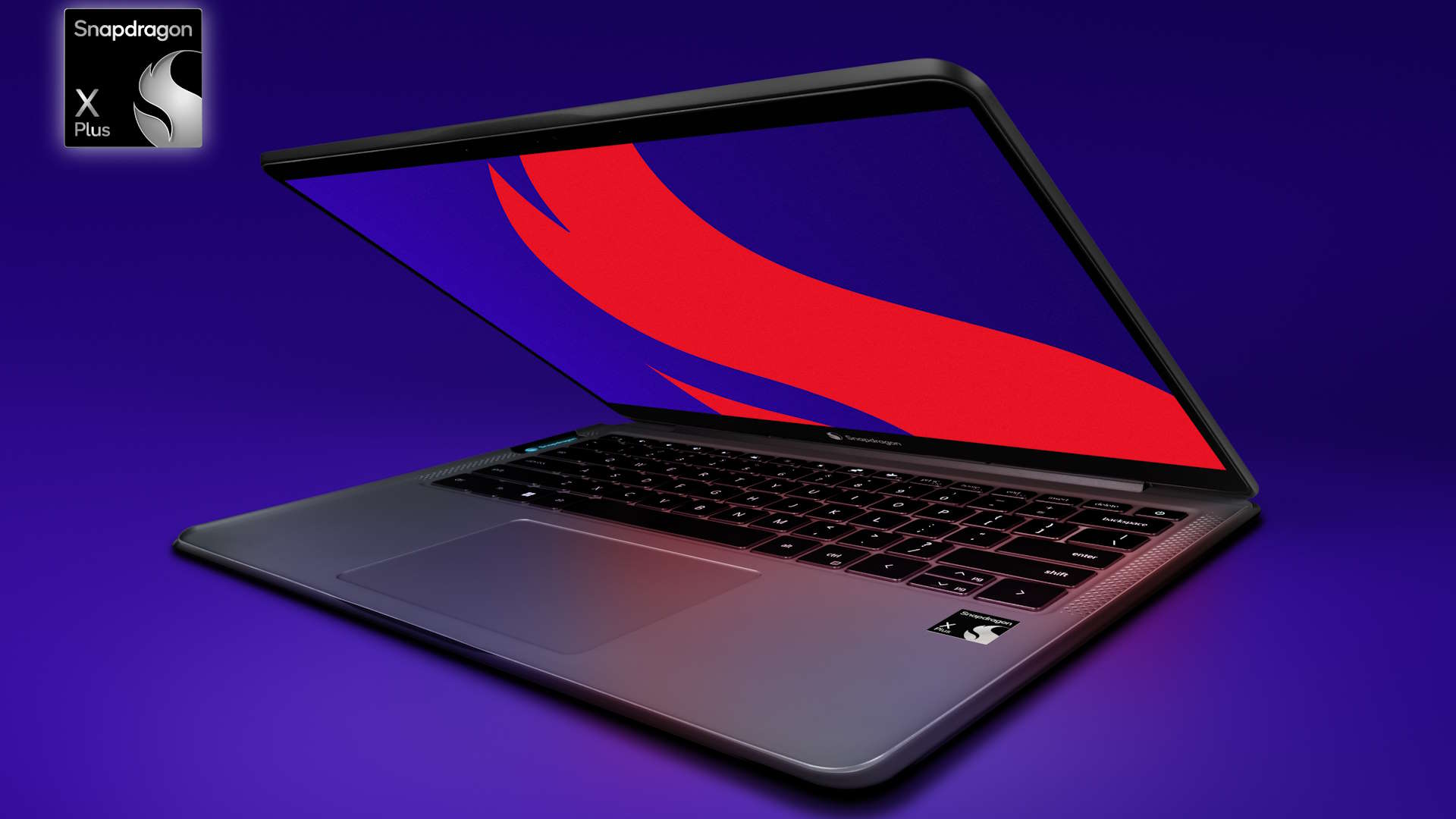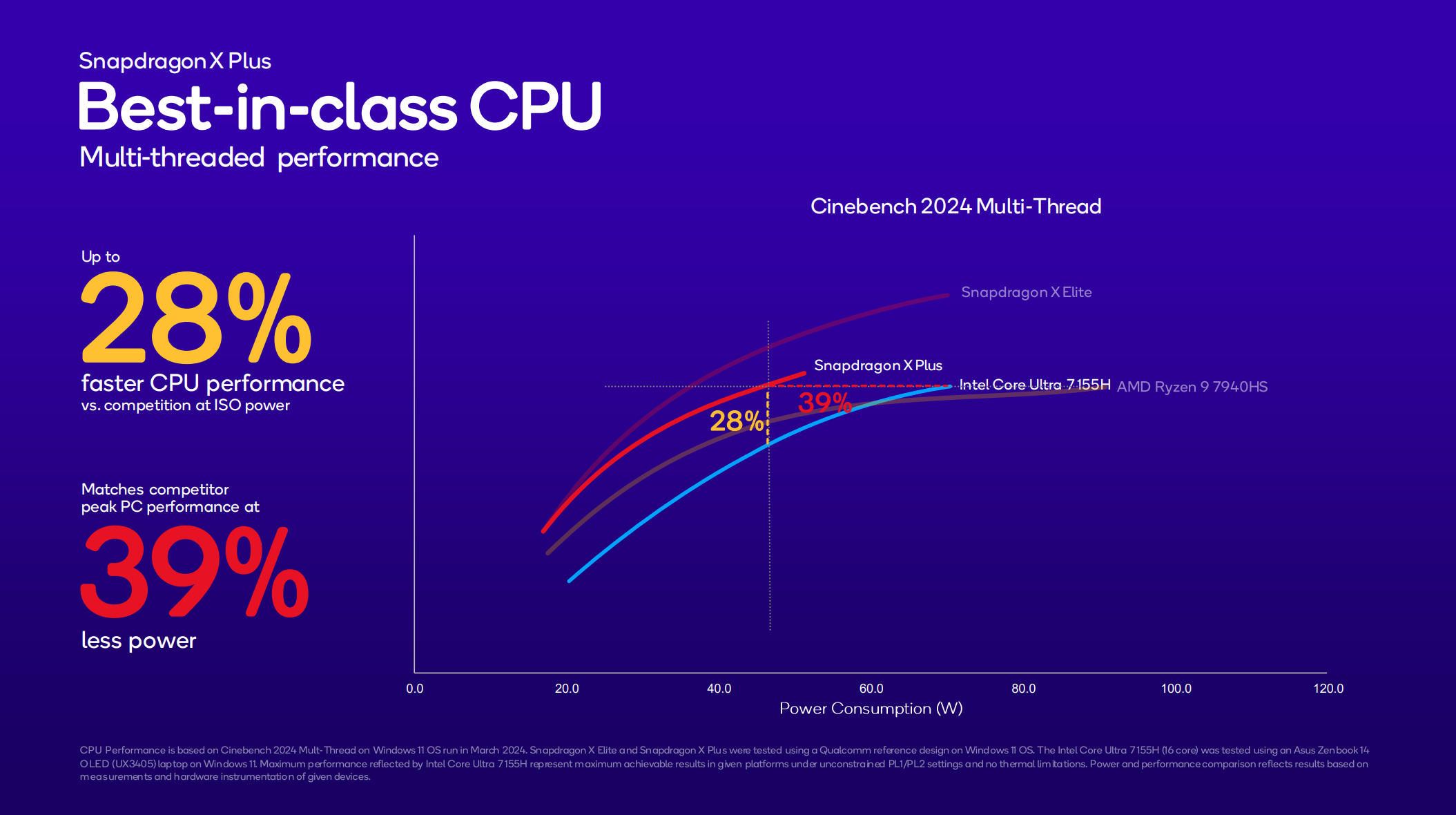
Qualcomm has just taken the wraps off its new Snapdragon X range of laptop PC chips, giving us the full details of its first flush of ARM-based CPUs and a new lower-end model, too. The NEW Snapdragon X Plus processors will sit alongside the higher-spec X Elite chips, bringing the ARM architecture to the traditionally x86 dominated Windows desktop.
And, honestly, the new Qualcomm chips are the single piece of PC technology I'm most excited about seeing this year. With the promise that standard Windows games will "just work" with the Snapdragon X series, and the expectation that we are looking at performance levels around the already impressive AMD RDNA 3-based Radeon 780M built into the best of the red team's laptop chips and the best handheld gaming PCs around, there's some real promise in moving away from that classic x86 CPU in your next laptop.
Qualcomm has even said its chips can happily operate with discrete graphics cards, too, which means that gaming laptops based on the Snapdragon X Elite or X Plus chips aren't an impossibility, either.
Most of the specs of the new ARM chips have already been announced, but today we've got the full suite of processors, along with a decoder to help us understand the different part numbers. Gotta love a decoder…
Personally, I feel like if you need a decoder to understand a part's platform then you're doing naming schemes wrong. But at least there are only four different chips to get to grips with right now, and the decoder is nowhere near as convoluted and counterintuitive as AMD's laptop decoding wheel.
There are three X Elite chips and a single one of the only just announced X Plus processors. The X Elite chips are all 12-core parts, while the X Plus is a 10-core CPU. Other than that it's mostly a clock speed difference and a lack of Dual Core Boost that separates the X Plus chip. Though in those terms it actually matches the lowest spec X Elite, so potentially more affordable Snapdragon X series laptops will still have a pretty decent level of performance.


They all use the same Qualcomm Oryon CPU core at their hearts, though with a different core count. But there is one thing to note from this specs drop, however, and that is a slight drop in the Dual Core Boost performance of the top Snapdragon X Elite chip. In the original material around Qualcomm's top chips, it originally stated that it could boost up to 4.3 GHz, but the new details show the X1E-84-100 CPU only capable of a 4.2 GHz boost. Though, in the grand scheme of things, that's probably not going to make a huge difference.
One thing we're pretty confident about the new ARM-based machines will be that they're not going to be the cheap alternative to AMD or Intel notebooks. Samsung is one of the manufacturers producing laptops with Qualcomm's latest processors, and early dealer prices for the Galaxy Book4 Edge indicate that it's going to be a premium-priced beastie.
So, one thing they're going to need to do is properly compete in performance terms with the x86 competition, and Qualcomm is seemingly pretty bullish about all this. In Cinebench 2024 (presumably the ARM64 version) it's promising the weaker X Plus will deliver up to 28% higher performance at the same power level compared with the Meteor Lake Intel Core Ultra 7 155H and that its slower Adreno iGPU will manage up to 36% higher performance at the same power level in the 3DMark Wildlife Extreme benchmark.
Videocardz has released a slide showing some specific benchmark numbers (which we didn't receive from Qualcomm ahead of the embargo) and from testing the Core Ultra 5 135H against it, those numbers are making sense when I'm limiting my machine to 20 W. Though even at its max 35 W, the Intel chip is posting 3DMark numbers behind even the Snapdragon X Plus. It's worth noting these are 3DMark numbers, and Intel's GPUs are well optimised for those workloads.
But what's really exciting about these numbers, and about the possibility of having an ARM-based solution for Windows laptops, is the power consumption of these chips. On the CPU side Qualcomm is promising the lowest spec Snapdragon X Plus CPU will be able to match the peak performance of AMD and Intel's competing processors using 39% less power.
And that only looks better when you check out the promised gaming performance. Qualcomm states that the X Plus will match the Meteor Lake Arc iGPU frame for frame with 50% less power. That's going to do great things for mobile gaming if you can genuinely squeeze anything like that extra battery life out of your machine with proper 1080p gaming performance.



And that's what we're expecting; frame rates on par with even the AMD 780M, and that can offer gaming performance I'll happily take in a thin and light laptop. Because that's what Qualcomm is demonstrating here, genuinely MacBook Air styled machines with actual PC performance in PC applications.
This is the promise, and why we're so excited to get our hands on laptops powered by Qualcomm's new chips when they launch in the middle of this year. And you know what happens in the middle of the year? Computex… where Qualcomm's CEO, Cristiano Amon, will be hosting a keynote right after Dr. Lisa Su.
Whether the Snapdragon X series of chips can live up to the hype is still to be seen, but it's looking good so far, and if you were AMD and Intel maybe you'd be starting to worry about your mobile lineups.







